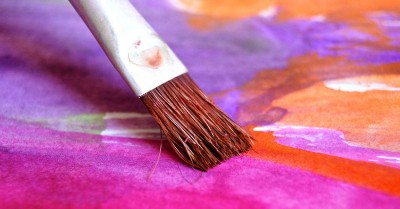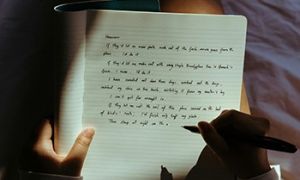Art-based learning is used in most approaches to early childhood education across the world. It is widely accepted that art not just helps the child to develop creative and fine motor skills but also nurtures cognitive skills like planning and problem-solving. There are two main approaches to using art in learning – art as a product and art as a process.
The following will help you to understand the difference between the process and product art and which you may use in your learning environment.
What Is The Difference?
In product art, children are provided with a model to work from and instructions on how to go about it. Along the way, they are supported by the educator but in the end, their artwork is expected to look like the original.
The problem with this approach is that it makes the activity adult-centred rather than child-centred. The child does not have any agency in choosing the object to be drawn which, again, may not have personal significance for the child. Moreover, if the end-product does not look like the model, the child may become frustrated and lose self-esteem.
In order to offset these difficulties, educators now give more importance to art as a process rather than as a product.
Process art focuses on the creativity of the child. It allows children the freedom to imagine, innovate and experiment which are crucial to meet the objectives of art-based learning.
How To Support Process Art
Keeping in mind the benefits of process art, here are a few ways you can support the approach with children:
- Let children choose what they wish to create.
- Offer varied stimuli and models in the classroom that incorporate different colours, lines, shapes, textures, sizes and even sounds.
- Encourage children to draw or paint something based on their own interests, from colourful wrappers to discarded cardboard boxes.
- Also, support them if they want to draw objects with personal significance like a favourite sipper or a toy lizard.
- Bear in mind that art need not be restricted to paper and paint but can use a whole range of materials like beads, yarn, clay, string, fabric, wood, foam, wood and glue.
- Nurture use of a combination of media; for example, a child may wish to dip a leaf in paint and then stamp it on paper rather than just reproducing the leaf on paper with crayons.
Follow Up With Questions
In order to make process art a meaningful exercise, get to think about what they have been doing. Thus you can ask questions like:
- What made you choose to draw this object?
- How did you decide which colours and materials to paint it with?
- What shall we do with this lovely artwork that you have made?
- How were you feeling when you were making this?
Finally, see if you can explore a balance between process and product art; for example on Pizza Day, let children choose colours and materials to draw a pizza – such an exercise will incorporate the choice and flexibility of process while ensuring the end result has the structure of the product.
References:
Process Art Experiences, NAEYC



 As an Educator in Australia, your pay rate falls under the Children’s Services Award 2010. This award states the minimum amount that an employer can
As an Educator in Australia, your pay rate falls under the Children’s Services Award 2010. This award states the minimum amount that an employer can When working as a qualified Early Childhood Teacher (with a university degree) within a service, your rate of pay will come from the Educational Services
When working as a qualified Early Childhood Teacher (with a university degree) within a service, your rate of pay will come from the Educational Services When working as a Diploma Qualified Educator your pay rate is from the Children's Services Award 2010. This Award states your minimum rate of pay
When working as a Diploma Qualified Educator your pay rate is from the Children's Services Award 2010. This Award states your minimum rate of pay When working as a Cert 3 Qualified Educator, your pay rate is from the Children's Services Award 2010. This Award states your minimum rate of
When working as a Cert 3 Qualified Educator, your pay rate is from the Children's Services Award 2010. This Award states your minimum rate of Educational Leaders play a crucial role in their early childhood service by ensuring that the educational program aligns with best practices and supports the holistic
Educational Leaders play a crucial role in their early childhood service by ensuring that the educational program aligns with best practices and supports the holistic In early childhood education and care, ratios are more than a technicality—they are a frontline safeguard. Every child deserves responsive supervision, emotional connection, and developmental
In early childhood education and care, ratios are more than a technicality—they are a frontline safeguard. Every child deserves responsive supervision, emotional connection, and developmental Here’s a comprehensive Mobile Phone and Smart Watch Policy tailored for early childhood education and care (ECEC) services in Australia, aligned with the latest 2025
Here’s a comprehensive Mobile Phone and Smart Watch Policy tailored for early childhood education and care (ECEC) services in Australia, aligned with the latest 2025 With the new national child safety reforms kicking in on 1 September 2025, early childhood services like yours have a real opportunity to lead the
With the new national child safety reforms kicking in on 1 September 2025, early childhood services like yours have a real opportunity to lead the The Sea of Fish Challenge is a national initiative that invites children, educators, families, and communities to create and display fish artworks as a symbol
The Sea of Fish Challenge is a national initiative that invites children, educators, families, and communities to create and display fish artworks as a symbol Across the early childhood education and care sector, educators are sounding the alarm: current staffing ratios are insufficient to deliver safe, meaningful, and developmentally appropriate
Across the early childhood education and care sector, educators are sounding the alarm: current staffing ratios are insufficient to deliver safe, meaningful, and developmentally appropriate


